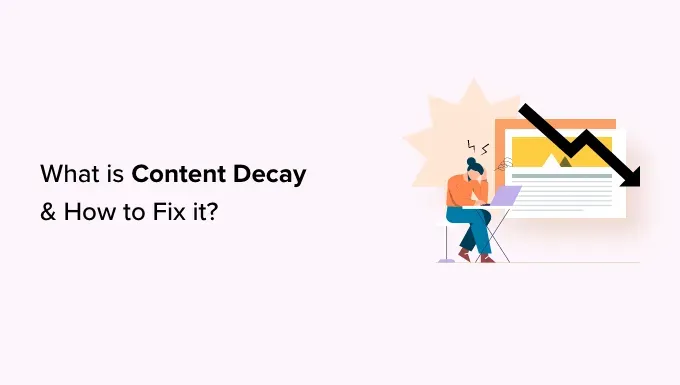Planning a marketing budget doesn’t have to be overwhelming. Whether you’re a startup or an established brand, a strategic budget ensures every dollar drives growth. This guide breaks down the process into 7 simple steps—from setting SMART goals to adjusting campaigns in real time. Learn how to allocate resources wisely, avoid wasteful spending, and maximize ROI, even with limited funds. Let’s turn budgeting chaos into clarity!

Step 1: Define Clear Marketing Objectives
Set SMART (Specific, Measurable, Achievable, Relevant, Time-bound) goals aligned with business priorities. Examples: “Generate 500 leads via LinkedIn Ads in Q3” or “Boost website traffic by 30% in 6 months.” Clear objectives guide budget allocation, prevent wasted spend, and ensure campaigns deliver measurable results like brand awareness, lead generation, or sales growth.
Why SMART Goals Matter?
SMART goals (Specific, Measurable, Achievable, Relevant, Time-bound) provide clarity and direction. Instead of vague aims like “increase sales,” define precise targets, such as “generate 200 qualified leads via email campaigns in Q2.” Measurable KPIs (e.g., conversion rates) track progress, while achievable goals align with resources. Relevance ties objectives to business priorities, like entering a new market. Deadlines (e.g., “boost website traffic by 40% in 6 months”) ensure accountability. SMART goals eliminate guesswork, prevent budget waste, and align teams, ensuring every dollar drives measurable outcomes.
Align Objectives with Business Priorities
Marketing objectives must support broader business goals. For startups, focus on brand awareness (e.g., social media growth) to build visibility. Established businesses might prioritize customer retention (e.g., loyalty programs) or product launches. For example, a SaaS company could aim for “15% trial-to-paid conversion in 90 days” to boost revenue. Aligning objectives ensures budget allocation targets high-impact areas, avoids scattered spending, and creates synergy between marketing and sales teams. Regularly revisit goals to adapt to market shifts or organizational changes.
Examples of Effective Marketing Objectives
Common objectives include:
Brand Awareness: Increase Instagram followers by 30% in 6 months.
Lead Generation: Capture 500 webinar sign-ups monthly.
Customer Retention: Reduce churn by 10% with personalized email campaigns.
Sales Growth: Drive $50K in revenue via Google Ads in Q4.
Step 2: Review Historical Performance
Analyze past campaigns to identify successes and inefficiencies. Track metrics like ROI, CAC, and conversion rates across channels. Learn which tactics (e.g., high-performing LinkedIn ads) delivered results and which (e.g., low-engagement print campaigns) drained resources. Use insights to reallocate budgets, optimize strategies, and replicate wins while avoiding past mistakes.

Key Metrics to Analyze
Reviewing historical data starts by identifying critical metrics that reflect past campaign success. Focus on ROI (Return on Investment) to compare revenue generated versus costs. Calculate CAC (Customer Acquisition Cost) by dividing total spend by new customers acquired—high CAC may signal inefficiency. Track conversion rates across channels (e.g., email vs. social ads) to pinpoint top performers.
Analyze engagement metrics like click-through rates (CTR) or time-on-page to gauge content effectiveness. Seasonal trends, such as holiday sales spikes, also inform budget timing. Tools like Google Analytics, CRM dashboards, or HubSpot simplify this analysis, offering actionable insights to replicate wins and avoid past mistakes.
Turning Data into Actionable Strategies
Historical performance isn’t just about numbers—it’s about refining your strategy. For example, if LinkedIn Ads drove 40% of leads, allocate more budget there. Conversely, cut underperforming tactics (e.g., low-engagement print ads). Optimize the customer journey: if prospects drop off at the consideration stage, invest in retargeting ads or personalized emails.
A/B test small adjustments, like tweaking ad copy or landing pages, before scaling. For instance, a SaaS company shifted funds from Facebook Ads to Google Search after discovering higher conversion rates. This data-driven approach ensures your budget fuels growth, not guesswork, while maintaining agility for market shifts.
Step 3: Understand Your Target Audience
Research demographics, psychographics, and behaviors through surveys, analytics, and competitor analysis. Build audience personas (e.g., “Budget-Conscious Ben”) to tailor messaging. Align budget with preferred platforms (LinkedIn for professionals, TikTok for Gen Z) and content types. Avoid irrelevant channels, ensuring resources drive engagement and conversions while maximizing ROI.
Conduct Audience Research
Understanding your audience starts with demographic and psychographic research. Use surveys, social media analytics, and CRM data to identify age, location, interests, and pain points. For example, a SaaS company might find its primary users are mid-sized businesses struggling with workflow efficiency. Tools like Google Analytics reveal which platforms (e.g., LinkedIn vs. TikTok) your audience prefers.
Competitor analysis highlights gaps—perhaps competitors overlook YouTube tutorials your audience craves. Audience research also uncovers behavioral trends, like preference for video content over blogs. This data ensures budget allocation aligns with platforms and content types your audience engages with, maximizing ROI and avoiding wasted spend on irrelevant channels.
Build Detailed Audience Personas
Create personas to humanize data. For example, “Efficiency-Driven Emily,” a 35-year-old operations manager, seeks tools to automate tasks and prefers LinkedIn for professional insights. Include demographics, goals (e.g., cost savings), challenges (time constraints), and preferred channels (podcasts, webinars). Personas guide content creation—Emily might engage with case studies showing time savings, while Gen Z “Budget-Conscious Ben” responds to TikTok demos.
Tailor messaging to address pain points: highlight affordability for startups or scalability for enterprises. Refine personas quarterly using updated data, ensuring campaigns stay relevant. Personas prevent generic messaging, foster deeper connections, and ensure budgets target high-conversion segments.
Step 4: Determine Your Total Budget
Choose methods like percentage of revenue (5–15% of projected income), objective-based (costs tied to goals, e.g., $50 CAC × 1,000 customers), or competitive benchmarking (analyze rivals’ spend). Blend approaches for flexibility—allocate 70% to proven channels (SEO, ads) and 30% to experiments (influencers). Adjust quarterly based on ROI and market shifts.
Scenario-Based Budgeting
Scenario-based budgeting prepares for uncertainty by creating flexible plans for different outcomes. For example, a retail brand might allocate 70% of its budget to core holiday campaigns but reserve 30% for unplanned opportunities (e.g., viral trends). If sales exceed projections, funds shift to inventory restocking ads. If demand dips, budgets pivot to retention efforts like email discounts.
This method balances stability with adaptability, using tools like predictive analytics to model best-case, worst-case, and moderate scenarios. It’s ideal for volatile markets or industries like travel, where external factors (e.g., pandemics) can disrupt plans.
Value-Driven Budgeting
Value-driven budgeting prioritizes channels with the highest customer lifetime value (CLV). For instance, a subscription service might invest heavily in referral programs if loyal users bring in 3x more revenue than one-time buyers. Calculate CLV by averaging revenue per customer minus acquisition and retention costs. Allocate funds to tactics that nurture long-term relationships, like personalized email campaigns or loyalty rewards.
Conversely, reduce spend on low-CLV channels (e.g., one-click social ads with high churn). This approach maximizes profitability over time, aligning spend with sustainable growth rather than short-term wins. Pair it with A/B testing to refine high-value strategies.
Step 5: Allocate Budget Across Channels
Divide your budget based on performance and goals. Prioritize high-ROI channels (e.g., social media ads, email marketing) using past data. Allocate 50–60% to proven tactics, 20–30% to organic efforts (SEO, blogs), and 10–15% to test new platforms (TikTok, podcasts). Example: An e-commerce brand spends 40% on Google Ads, 30% on SEO, and 20% on influencer collabs. Adjust quarterly if channels underperform.
Sample Budget Breakdown
| Channel | Allocation | Purpose |
| Social Media Ads | 35% | Brand awareness, lead gen |
| SEO & Content Marketing | 25% | Organic traffic, long-term growth |
| Email Marketing | 15% | Customer retention, nurturing |
| PPC Ads | 15% | Immediate conversions |
| Events/Experiential | 10% | Community building, PR |
Step 6: Set Timelines and KPIs
Align campaigns with business cycles (e.g., Q4 holidays, Q1 launches) and set deadlines for each phase. Track KPIs like ROAS, conversion rates, and engagement metrics using tools like Google Analytics. Regularly review performance to adjust timelines or reallocate budgets, ensuring goals are met efficiently.
Creating a Timeline for Campaign Execution
Establishing timelines ensures campaigns align with business cycles and deadlines. For example, allocate 40% of Q4 budgets to holiday promotions, while Q1 might focus on lead generation for annual targets. Break projects into phases: plan social media ads 3 months pre-launch, allocate 2 weeks for A/B testing creatives, and schedule email drips post-launch. Use tools like Google Calendar, Asana, or Trello to track milestones. Seasonal businesses (e.g., travel) may prioritize summer or winter peaks. Align timelines with team capacity—avoid overlapping high-effort campaigns. Flexibility is key: leave buffer weeks for adjustments if delays occur. Clear timelines prevent last-minute chaos and ensure resources are spent efficiently.
Defining and Tracking Key KPIs
KPIs (Key Performance Indicators) measure success and guide adjustments. For sales campaigns, track ROAS (Return on Ad Spend) or conversion rates. Brand awareness efforts might prioritize organic reach or social shares. Use tools like Google Analytics, HubSpot, or SEMrush for real-time tracking.
For example, a webinar campaign’s KPIs could include registrations (goal: 500), attendance rate (60%), and post-event lead quality. Set benchmarks: if email CTR drops below 2%, revise subject lines. Regularly review dashboards—weekly for paid ads, monthly for SEO. Adjust budgets if KPIs lag: shift funds from low-CTR Facebook Ads to high-performing Google Search. KPIs turn abstract goals into actionable, data-driven decisions.
Step 7: Monitor, Analyze, and Adjust
Track campaign performance using tools like Google Analytics. Analyze KPIs (ROI, CAC) weekly—if Facebook Ads underperform, shift funds to Google Search. A/B test creatives and adjust timelines. Keep a 5–10% contingency budget for unexpected opportunities. Continuous refinement ensures budgets adapt to trends, maximizing ROI and minimizing wasted spend.
Continuous Monitoring of Campaign Performance
Regular monitoring ensures campaigns stay on track. Use tools like Google Analytics, CRM dashboards, or social media insights to track KPIs in real time—ROI, CAC, engagement rates, and conversion trends. For example, a paid ad campaign might show a CTR drop after two weeks, signaling creative fatigue. Schedule weekly check-ins to review data and flag issues early, like overspending on underperforming channels (e.g., stagnant Instagram Stories). Automated alerts for anomalies (e.g., sudden traffic dips) help teams act swiftly. Share progress reports with stakeholders to maintain transparency. Monitoring isn’t passive—it’s proactive problem-solving, ensuring resources adapt to real-time performance rather than sticking to outdated plans.
Data-Driven Adjustments for Optimization
Analyze data to refine strategies. If Facebook Ads have a 2x higher CAC than Google Search, reallocate funds mid-campaign. A/B test variables like ad copy, landing pages, or email subject lines—e.g., changing a CTA from “Buy Now” to “Get 50% Off” boosted e-commerce conversions by 15%. For seasonal shifts, pivot budgets: a travel brand might redirect ad spend from summer beach gear to winter ski packages. Keep a 5–10% contingency fund for unexpected opportunities, like capitalizing on a viral trend. Post-campaign audits reveal long-term lessons (e.g., video content outperforms blogs). Agility turns insights into action, ensuring budgets evolve with audience behavior and market dynamics.
Conclusion
A well-planned marketing budget is your roadmap to success. By following these 7 steps, you’ll align spending with goals, adapt to market shifts, and prioritize high-impact channels. Remember: flexibility and data-driven decisions are key. Start with clear objectives, track progress, and refine as you go. Ready to transform your marketing strategy? Begin with Step 1 today—your ROI will thank you!








